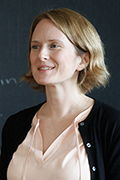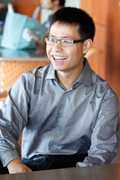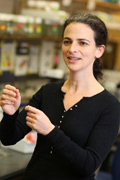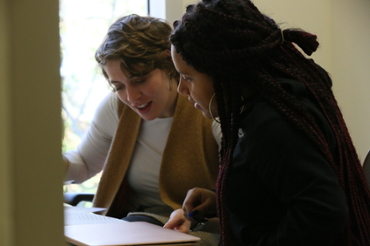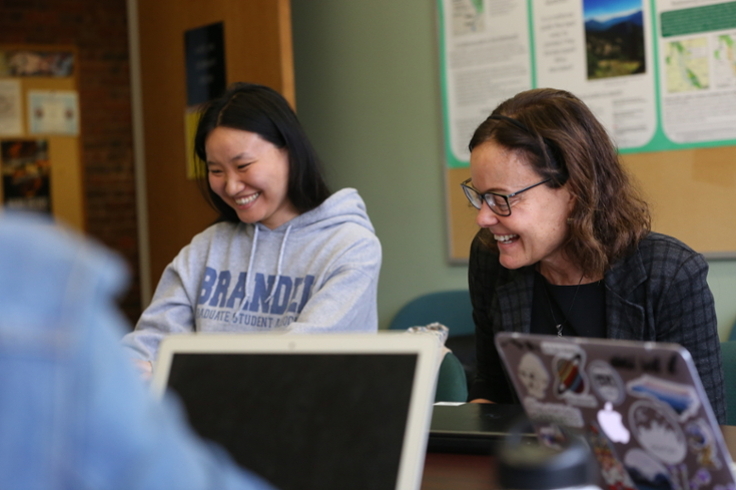Scientific Connections: An Interview with Maria-Eirini Pandelia
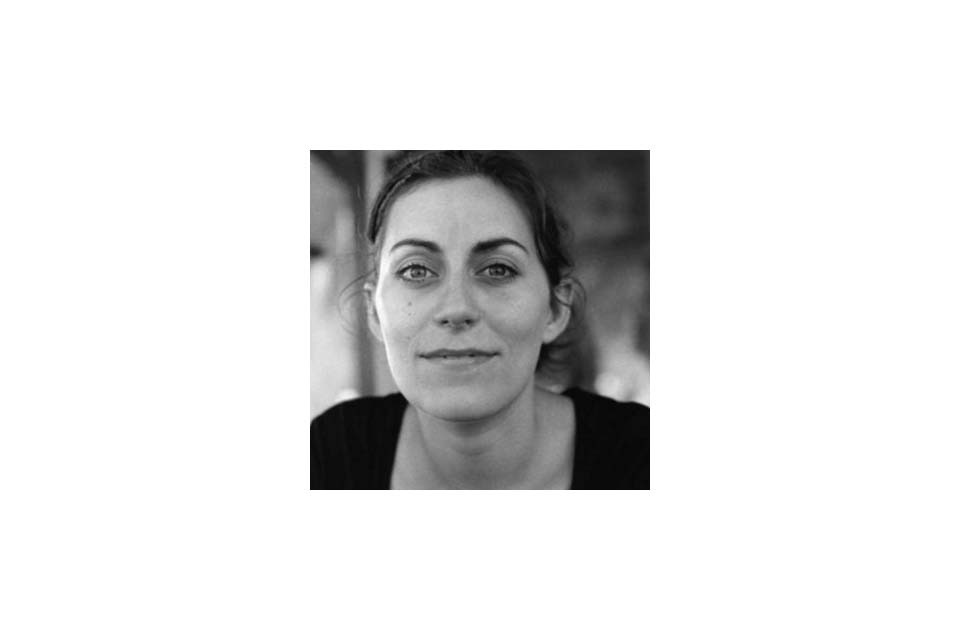
January 22, 2025
Abigail Arnold | Graduate School of Arts and Sciences
Maria-Eirini Pandelia is an Associate Professor of Biochemistry at Brandeis University, where she has been a faculty member since 2016. The members of her lab include graduate students from the Biochemistry and Biophysics program. Pandelia spoke to the Graduate School of Arts and Sciences (GSAS) about her research on metalloproteins, Brandeis’s wide network of connections with other scientists, and her love of seeing graduate students succeed.
What’s your academic background, and how did you come to Brandeis?
It was a little bit of a winding road. I started out studying physics and got my bachelor’s and master’s in physics in Greece. I then got my PhD in biophysics in Germany at the Max Planck Institute for Chemical Energy Conversion. In 2012, I moved to the United States and started a postdoc at Penn State University, where I focused on biochemistry and enzymology. I started as an Assistant Professor in 2016 at Brandeis, where I have been continuing my work in biochemistry and enzymology.
What are you currently researching, and what are its applications?
My research broadly focuses on metals in proteins and how these harness the chemical potential of metals to carry out chemical reactions that would be otherwise not feasible. Currently, I am researching in three areas.
The first area is viral metalloproteins. Metalloproteins play crucial but poorly understood roles in how viruses manipulate their hosts and misregulate key cellular processes. Our research aims to bridge the existing knowledge gap about how metal ions affect the function of enzymes that are at the nexus of host-pathogen interface and immune response.
The second area centers around natural products from cyanobacteria, which are considered a prolific source of toxins and antibiotics. Cyanobacteria harness enzyme chemistry to create an astonishing array of toxins and antibiotics by using only primary amino acids. Science is only beginning to understand and exploit this potential. The research focuses on the bacterial utilization of tryptophan to produce toxins and other metabolites via a series of enzymes that functionalize the indole moiety. We are studying the molecular pathways involved in cyanobacteria’s synthetic routes and how they make natural products so that we can produce similar products for therapeutic purposes. For example, bald eagles in California are dying from a neurotoxin produced by cyanobacteria, and we recently, together with our collaborators at the Oceanographic Institute at Scripps, helped uncover the molecular mechanisms of the enzymes responsible for the production of the toxin. Currently, our work expands on our findings and focuses on dissecting the different strategies by which nature converts tryptophan into bioactive molecules with a toxic or therapeutic potential.
The third area involves a protein that is an anti-viral factor in humans: it protects against HIV-1. We are studying the metal dependence of its mechanism and have discovered that other organisms like plants and human parasites also encode this protein. This means that it’s a good anti-parasitic target. For example, a parasite that causes sleeping sickness in humans really needs the protein for its genomic integrity and viability, so if you inhibit it, you can offer pathways that can inhibit the disease causative agent. These proteins can also provide simpler models for studying the human enzyme, an anti-viral factor but one that’s also indicated in a lot of cancers. It also has a metal-dependent mechanism, so looking at the protein we’re studying could help us figure out the achilles heel of the human enzyme that produces unwanted chemoresistance to existing treatments. We’re trying to figure out how we can use information from this more simple protein to help create cancer drugs that work and are not broken down in the body before they can be effective.
How do you collaborate with others in your research?
While I mainly became interested in these areas because of my fascination with uncovering the molecular functions and role of metal ions in proteins, there was also serendipity in topics that came to me through collaborators. I had never planned to work on the human enzyme SAMHD1, but scientists from Johns Hopkins who work with Pfizer reached out and asked my lab to help with figuring out its metal dependence. I have also come to other topics through similar outreach. We are a highly collaborative lab, and a lot of projects are born from people coming to us wanting to explore a basic question that expands into something bigger. Recently, we even had a collaborator from New Zealand! Brandeis is in the center of many big universities. We’re small, but we attract a lot of people to work with us because we’re focused on a less common research area. This helps us connect with a lot of parts of the world.
How do you like working with Brandeis graduate students?
I love it! They are so easy to work with. They’re very interested and motivated and have a good level of knowledge. Brandeis is a very tight-knit community, and graduate students from different labs have strong relationships.
When you’re doing research, especially graduate research, you need to go through a lot of failures to reach your goals. When I see students struggling with something that’s not working, I always tell them something that Louis Brandeis said: “If you would only recognize that life is hard, things would be so much easier for you.” I think the students here are good at understanding that research is tough but that at the end you get something that’s worth it.
What do you think are the strengths of Brandeis’s graduate program in Biochemistry and Biophysics?
It’s a very interdisciplinary program, and the different departments in the sciences have close relationships. For example, I could be a co-mentor of a student in Molecular and Cell Biology and collaborate with a different department. There are no real boundaries or barriers in using equipment or in asking for advice or ideas. There is a flow and a flux of information that’s very unique.
I’m a relatively new faculty member, and I’ve had three PhD students from my lab graduate so far. I was concerned about whether they would be okay when they left Brandeis, but I didn’t need to be – they all got jobs before graduating. The degree from Brandeis puts you in a unique position, and people in both academia and industry want to hire you. I think that speaks to the quality of the education offered by our program.
